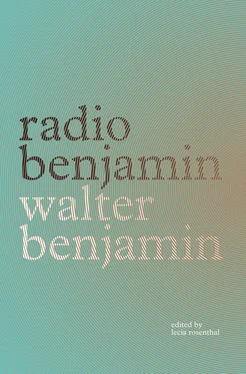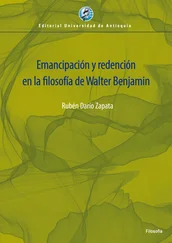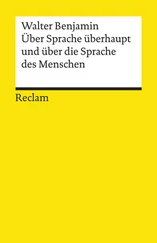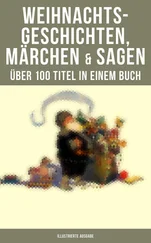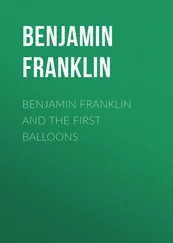Now the brass is there. But the immense work process is only just beginning. The massive blocks, the heavy cylinders that come from the foundry must be transformed into millimeter-thin sheets, fine-as-a-hair threads, narrow bands. These manufactured products, which are very long, naturally demand to be processed in much bigger rooms than the products of normal mechanical workshops. Years ago, the situation was remedied by building one factory hall next to the other when needed. But during the course of the war, the Brass Works started enlarging and transforming its entire operation, and it was clear from the start that the entire rolling process had to be housed in a single, great hall. And in the year 1920, the 215-meter-long rolling-mill hall was inaugurated. The history of its construction was a long chain of difficulties. Wherever the ground was probed for its suitability to support such a big building and the enormous load created by the machines, groundwater was discovered, and in the end, nothing could be done except anchor all the iron posts and all the machines’ bases in deep, extra-thickly sealed concrete troughs. Thus every single press, every single rolling mill had to have its own, very exact, unchangeable spot in the blueprints even before the hall was built. In addition, because no above ground electric lines could be tolerated due to the danger they posed to operations, a blueprint for the distribution of electric cables had to be worked out from the start. A blueprint for the distribution of electric cables at the same site, and for the same Brass Works, where 150 years earlier the operations had been powered by charcoal made by charcoal burners in the kilns around Eberswalde.
If we now enter the rolling-mill hall, we must take our leave of the beautiful, bright flames of the smelting furnaces and the golden mountains of brass waste. It gets grayer and more monotonous. All the more strange and lively, therefore, is what we see disappearing into the machines and then gliding out of the machines, transformed. There are the hydraulic presses, which seize hold of a short, massive brass cylinder with a pressure of more than 1,000 metric tons and then release a bundle of glowing tubes, as soft as an animal’s viscera, at the other end. Outside, at the mouth, workers stand already waiting for them with tongs, and stretch them the entire length of a ten- to fifteen-meter-long trough like a canal. After that, they are put in a corrosive bath in which they are cleaned; and here at these corrosion machines, as in a few other places, one can still see the old manual operation next to the new automatic one and make comparisons. Some of you have heard talk of rationalization. This is the technical escalation of the work process, which is thereby made cheaper through savings in the workforce and work time. The bigger and more modern a workplace is, the better it can be used to gauge what rationalization means. In the Brass Works there are now thirty ovens, or muffle furnaces as they are called, to reheat the metal that has cooled in the rollers, and two workers are needed to service these thirty ovens, whereas in the old factory no less than twenty-eight were employed for fifteen ovens. These muffle furnaces are necessary because the rods and plates get very hard in the rolling process and, to soften them up again, they need to be constantly reheated so that they can continue to be formed. Perhaps you can get an idea of the rollers, which are staggered in three rows behind one another, when I tell you that just one of them cost 500,000 marks and that it took eight weeks to set it up.
If you ever have the opportunity to see this Brass Works or a similar gigantic enterprise, then you must first have a good night’s sleep, keep your eyes open, and, especially, have no fear. That is necessary because otherwise you would stumble over the tracks and workpieces that cover the floor of the hall; you would have no eye for the work and instead would constantly look up in case one of the ton blocks, which are being swung through the air by cranes, was about to fall on your head; you would see only an impenetrable linkage, a network that seems to flicker, and not the clear, sharp division of the hall, where every worker has his specific place and every machine has, in a way, its own small office, from which the manager, with his eye on the automatic electricity, pressure, and temperature gauges, directs it. But if you then step outside, your head spinning from so much noise, so many great impressions, some understood and some not, and think that now you are in open nature, which has nothing to do with the labor and the racket going on inside, then the factory guide, who hopefully will explain everything to you as clearly and in as much detail as he did to me, will tell you that a large part of this countryside depends on the fate of the factory. Because this fate is closely tied to transportation. The Brass Works could not have become what it is without the now aging Finow Canal and without the new, modern Hohenzollern Canal, on which freight barges bring its raw materials, copper from Chile and Africa and brass waste from German factories, and export its products to India, China, Australia, et cetera, via Hamburg. The land between the Brass Works and the Hohenzollern Canal is still open. Yet, because nowadays industries spread out in ten years as much as they used to in a hundred, it is possible that later one of you, when he enters the Brass Works as a visitor, a worker, or an engineer, will step into new halls and factories that are mirrored in the water of the Hohenzollern Canal.
“Besuch im Messingwerk,” GS, 7.1, 131–7. Translated by Lisa Harries Schumann.
Broadcast on Radio Berlin, early July 1930, most likely on July 12, 1930. Benjamin dated the typescript, “Radio Berlin, 11 July, 1930.” The Funkstunde announced what was probably a related broadcast for July 1, 1930, and for the Youth Hour on July 12, 1930: “ ‘A Walk through a Brass Works [Gang durch ein Messingwerk].’ Speaker: Dr. Walter Benjamin,” from 3:20–3:45 pm.
CHAPTER 12. Fontane’s Wanderings through the Mark Brandenburg 1
Some of you may know this, but many will be astounded when I tell you: the beauty of the Mark Brandenburg was discovered by the youth of Berlin. 2By their vanguard, the Wandervogel. 3The Wandervogel movement is now about twenty-five years old, and it’s been just as long since Berliners ceased being ashamed of “The Good Lord’s Sandbox,” as the Mark is commonly known. And still it took some time before they really started to love it. For in order to love it, you have to know it. In the last century, however, that was something quite rare. Earlier on, only craftsmen and the more well-to-do hiked in the Alps. It occurred to very few people to do so in Germany, and especially in the Mark, until just around 1900 when this great, important movement began among students in Berlin: the Wandervogel . They had had enough, not only of the city, but also of the ritualistic Sunday stroll with their parents; they wanted something more than the same, over-grazed patches of the city; they wanted something new, to walk free in the open air among themselves. They didn’t have money so they couldn’t stray far, and they only had Sundays off. If they really wanted to make use of the short time they had, they needed to find places where they were safe from Berlin’s petite bourgeoisie. Areas without train access or hotels. You know how many such hidden locations still exist today in the Mark, despite the ever-tightening web of light railways across the countryside. But before the train and before the students, individual poets and painters always loved the Mark. Caspar David Friedrich and Blechen were two famous Brandenburg painters from the last century. 4Among the poets, however, none has done more for this landscape than the Berliner Theodor Fontane, who published his Wanderings through the Mark Brandenburg in 1870. 5Far more than tedious descriptions of landscapes and castles, these books are full of stories, anecdotes, old documents, and portraits of fascinating people. Let’s hear from Fontane himself how he felt about these wanderings, and how he got to know the Mark so well.
Читать дальше
